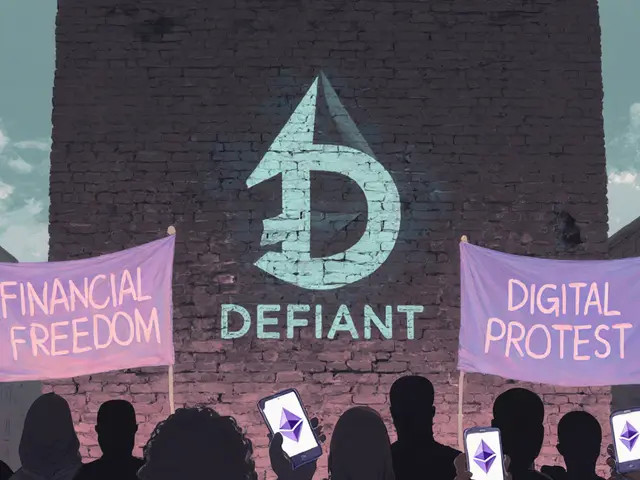Crypto Adoption Trends
When evaluating crypto adoption trends, the measurable shift of digital assets into everyday finance, commerce, and public policy. Also known as digital currency uptake, it reflects how users, firms, and regulators embrace blockchain technology.
One of the biggest catalysts behind these trends is stablecoins, cryptocurrencies pegged to fiat currencies or commodities that aim to keep price volatility low. They let merchants accept crypto without fearing sudden price swings, enable instant cross‑border payouts, and power many DeFi lending and yield platforms. Because stablecoins lower the risk barrier, they directly boost crypto adoption trends across retail and institutional users alike.
But technology alone isn’t enough; regulatory frameworks, government policies that define the legal status, licensing, and compliance requirements for crypto activities shape the speed and direction of adoption. The United Arab Emirates, for example, offers fast‑track crypto licenses and tax incentives, turning the region into a global hub for exchanges and token projects. In contrast, countries like Iraq impose strict bans while simultaneously planning a state‑run CBDC, showing how mixed signals can stall or redirect user interest. The interplay between friendly rules and restrictive measures determines where new users feel safe to jump in.
Layered on top of stablecoins and regulation is the rapid expansion of decentralized finance (DeFi), a suite of blockchain‑based services that replicate banking functions without traditional intermediaries. DeFi protocols offer lending, borrowing, and automated market‑making, while crypto exchanges such as WOO X, Deliondex, and GoSwap provide the on‑ramps that connect fiat wallets to these services. The growth of DeFi lowers entry hurdles, gives users control over their assets, and creates network effects that pull more participants into the ecosystem. When DeFi products integrate stablecoins, the result is a smoother, lower‑risk user experience that fuels wider adoption.
What’s Driving the Momentum and What to Watch
Beyond stablecoins, regulation, and DeFi, several other forces are nudging adoption forward. Real‑world use cases for stablecoins—such as cross‑border remittances, payroll in emerging markets, and programmable money for enterprises—show that these tokens are moving out of speculative corners and into daily transactions. Meanwhile, blockchain voting pilots are proving that transparent, auditable elections can run on public ledgers, hinting at broader civic‑tech applications that could normalize crypto exposure for millions. Cross‑chain interoperability tools like Polkadot’s XCM are enabling assets to move seamlessly between networks, which means users no longer need to be locked into a single blockchain. This fluidity expands the reach of DeFi services and reduces friction for newcomers. At the same time, advances in mining hardware—AI‑optimized ASICs and energy‑efficient designs—are making proof‑of‑work networks more sustainable, addressing one of the biggest environmental criticisms that have held back some adoption. Airdrops continue to act as low‑cost entry points for new users. Projects such as Artify, NYM, and various DeFi platforms distribute free tokens to broaden their community base, while tax‑friendly jurisdictions make it easier for recipients to keep what they earn. However, scammers are also exploiting the hype, so checking official channels and using secure wallets remain essential practices. All these pieces—stablecoins, regulatory clarity, DeFi infrastructure, cross‑chain bridges, and responsible airdrop practices—interlock to create a self‑reinforcing loop. As each element improves, it lifts the overall confidence in crypto, prompting more individuals and businesses to explore digital assets. Below you’ll find a curated selection of articles that break down each of these drivers in detail. From deep dives into specific tokens and exchange reviews to guides on becoming a validator or understanding tax implications, the collection gives you the practical knowledge you need to navigate today’s fast‑evolving crypto landscape.

Nigeria ranks #2 globally for crypto adoption, driven by inflation, unbanked population, and new regulations, with over 22 million users and growing institutional support.
Jonathan Jennings Oct 3, 2025




